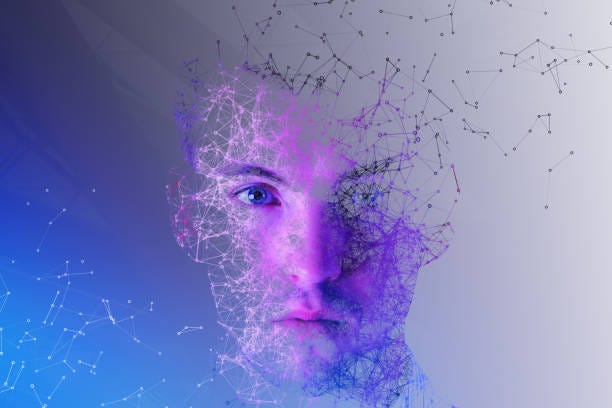Protecting AI Art IP: 6 Best Strategies
As the advent of artificial intelligence (AI) continues redefining the boundaries of art and creativity, protecting these digital masterpieces’ intellectual property (IP) grows increasingly urgent. Artists and designers are now navigating a complex legal terrain where traditional copyright laws may not provide adequate coverage for AI-generated artwork.
In light of this, it is crucial to consider a multi-faceted strategy that addresses the unique challenges posed by AI in the realm of art. From understanding the nuances of copyright laws about digital creations to implementing advanced technologies such as blockchain for provenance tracking, several vital measures can fortify the protection of AI artwork IP.
As we contemplate these strategies, one must ponder their implications for individual rights and the future trajectory of AI in the arts. The subsequent discussion aims to unveil these strategies, offering insights into their practical application and potential to shape a new intellectual property paradigm for the AI era.
Key Takeaways
- Copyright laws for AI are complex and evolving, and it is essential to understand how they apply to AI-generated artwork.
- Clear ownership agreements should be established to prevent disputes and infringement claims, specifying the contributions of both humans and AI systems.
- Digital watermarking techniques can provide additional protection to AI-generated artwork, establishing ownership and deterring unauthorized use.
- Registering AI-generated artwork with IP offices offers legal evidence of ownership, strengthens the creator’s position, and acts as a deterrent to infringers.
Understand Copyright Laws for AI

Grasping the nuances of copyright law concerning artificial intelligence is crucial for creators seeking to safeguard their AI-generated content legally and effectively. As the technological landscape evolves, so does the complexity of intellectual property laws dealing with Generative AI.
The current legal framework posits that while works generated solely by AI do not qualify for copyright, human input—such as the prompts or creative choices leading to AI production—can be. This distinction underscores the importance of disclosure in the application process for copyright protection.
The scope of protection for AI IP involves recognizing the original content generated and registering the copyright to avail of additional legal benefits. Registration is a potent deterrent against potential copyright infringement and fortifies the creator’s legal standing in remedying such violations. Moreover, fair use exceptions present a nuanced area where copyrighted AI-generated content can be utilized in limited capacities, often for purposes such as commentary, criticism, or scholarship.
Understanding these legal contours is imperative for creators to navigate the risks and strategize effectively. It ensures that the intellectual output of both human and AI collaboration is recognized and that the rights of creators are preserved within the ambit of evolving copyright norms.
Establish Clear Ownership Agreements
To safeguard the intellectual property rights of AI-generated content, it is imperative to forge clear ownership agreements that delineate the contributions and entitlements of all involved parties. Establishing clear ownership agreements is a strategic measure for protecting AI inventions and a legal necessity to prevent ambiguities that may lead to disputes or infringement claims. These agreements are pivotal in defining the scope of intellectual property (IP) protection, ensuring trade secret protection, and managing the legal implications of using AI in creating artwork.
Consider the following crucial elements when drafting ownership agreements for AI-generated content:
- Defining Contributions: Specify the extent of contributions made by humans and AI systems, delineating authorship and inventorship.
- Rights and Responsibilities: Articulate the rights to use, license, distribute, and modify the AI-generated content, as well as the responsibilities for maintaining IP protection.
- Scenario Planning: Include clauses that address future scenarios, such as updates to the AI system, derivative works, and content monetization strategies.
- Dispute Resolution: Establish mechanisms for resolving conflicts and managing the termination of the agreement, ensuring clarity on the continuation of rights post-agreement.
The analytical approach to crafting these agreements must be meticulous, with attention to the evolving nature of AI and its implications on intellectual property law.
Utilize Digital Watermarking Techniques

Building upon the foundational safeguards provided by clear ownership agreements, implementing digital watermarking techniques offers an additional layer of protection for AI-generated artwork by embedding indisputable ownership data within the content itself. This method hinges on the strategic incorporation of metadata, such as creator information and specific copyright details, directly into the pixels of the artwork. This invisible coding is designed to be robust against manipulation, ensuring that any attempt to remove or alter the watermark could compromise the integrity of the image, thereby safeguarding the rights reserved by the creator.
Digital watermarking serves not just as a deterrent to unauthorized use but also as a potent tool for establishing ownership in the event of legal disputes. By using AI software to embed digital watermarks, creators can seamlessly integrate protection mechanisms into their workflow. This proactive measure is critical in securing AI-generated artwork against unauthorized reproduction and distribution.
Furthermore, digital watermarking techniques facilitate the tracking and monitoring of artwork across various digital platforms, bolstering the defense against the infringement of trade secrets and other forms of intellectual property theft. In the ever-evolving digital landscape, IP protection strategies like digital watermarking are indispensable for maintaining the sanctity of AI-generated artwork.
Register Artwork With IP Offices

Registering AI-generated artwork with intellectual property offices constitutes a critical step in legally acknowledging and protecting the creator’s ownership and rights. As AI systems increasingly permeate the creative industries, clarifying and enforcing patent laws concerning AI-generated content becomes paramount. By officially registering artwork, creators can solidify their patent claims, providing a strategic advantage in protecting their intellectual property.
In the context of patent protection for AI artwork, consider the following points:
- Patent Application: Filing a patent application for AI artwork may be complex due to the unique nature of AI creations. It is essential to understand how patent law applies to these works and to prepare a thorough patent claim that reflects the creator’s contribution.
- Legal Evidence: Registering with IP offices offers incontrovertible legal evidence of ownership, bolstering the creator’s position in potential disputes.
- Deterrence of Infringement: A public registration record is a deterrent to infringers, signaling the creator’s intent to enforce their rights.
- International Protection: Registration can facilitate international patent protection, extending the artwork’s defense against unauthorized use across borders.
Monitor Usage With AI Detection Tools
Harnessing AI detection tools provides a robust mechanism for creators to monitor and track the usage of their AI-generated artwork, ensuring swift identification of unauthorized distribution or reproduction. These sophisticated tools employ artificial intelligence (AI) to scan the web and various digital platforms for signs of content that matches or closely resembles the original works. By analyzing significant data patterns and utilizing reverse engineering algorithms, AI detection systems can detect instances where artwork is being used without permission, even when subtle alterations have been made.
The precision of these tools lies in their ability to discern the unique digital fingerprints often embedded within AI-generated content. This allows for a highly accurate monitoring process, which is critical in the complex landscape of digital copyright. Creators can promptly protect their intellectual property rights when potential infringements are identified.
Implementing AI detection tools is a proactive measure against IP breaches and a strategic approach to maintaining the integrity and value of AI-generated artwork. As technology evolves, these tools become increasingly indispensable for artists and creators who seek to safeguard their creative investments in AI.
Implement Blockchain for Provenance Tracking

As the digital art landscape evolves, implementing blockchain technology emerges as a critical strategy for provenance tracking, offering a secure and memorable record of an artwork’s history and ownership.
The integration of blockchain into the realm of AI-generated artwork bolsters intellectual property (IP) protection through the following measures:
- Immutable Ledger: Blockchain provides a tamper-evident ledger that permanently records AI-generated art’s creation and transfer history, establishing a transparent chain of titles.
- Authenticity Verification: This technology ensures the authenticity of artworks by maintaining a clear lineage, which is essential for establishing value and credibility in the market.
- IP Rights Enforcement: Using blockchain in provenance tracking can serve as irrefutable evidence of originality, effectively safeguarding the IP rights attached to AI-generated pieces.
- Royalty Distribution: Smart contracts on the blockchain can automate royalty payments, honor artists’ resale rights, and ensure fair compensation for creators, including those contributing training data and data sets.
These blockchain systems must comply with a robust Privacy Policy to protect all stakeholders’ sensitive information in producing and distributing AI-generated artwork.
FAQs
What is intellectual property, and how does it relate to AI artwork?
Intellectual property refers to creations of the mind, such as inventions, literary and artistic works, symbols, names, and images used in commerce. In the context of AI artwork, it includes protecting the originality and ownership rights of AI-generated works, which may involve copyrights, patents, and trademarks.
What are the best strategies for protecting AI artwork intellectual property?
Some of the best strategies for protecting AI artwork intellectual property include leveraging trademarks, patents, and copyrights, managing IP portfolios effectively, understanding and applying AI-specific IP strategies, and seeking legal advice to navigate the implications of AI on intellectual property rights.
How can AI software and AI algorithms be protected under intellectual property rights?
AI software and algorithms can be protected under intellectual property rights through patents, which can cover the innovative aspects of the technology, and copyrights, which can protect the software code’s or algorithm’s specific expression.
What are the implications of AI on copyright protection for AI-generated works?
AI-generated works may be eligible for copyright protection if they meet the criteria of originality and authorship. However, the implications of AI on copyright protection also raise questions about the ownership and authorship of works created by AI systems.
How can AI-generated works be protected and leveraged for commercial purposes?
AI-generated works can be protected through copyrights and trademarks, which provide exclusive rights to the creators and owners. These works can also be leveraged for commercial purposes by developing IP strategies that enable their controlled use and monetization.
